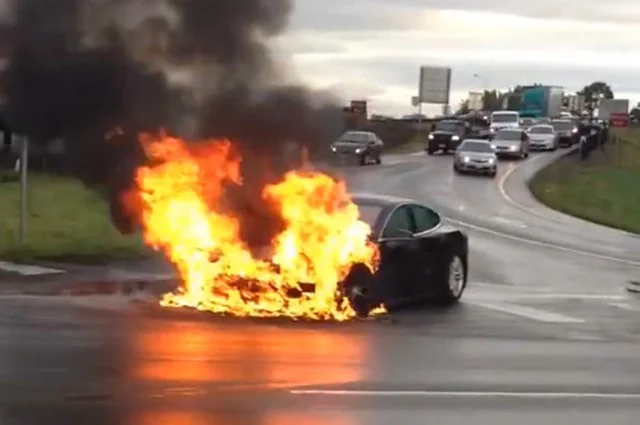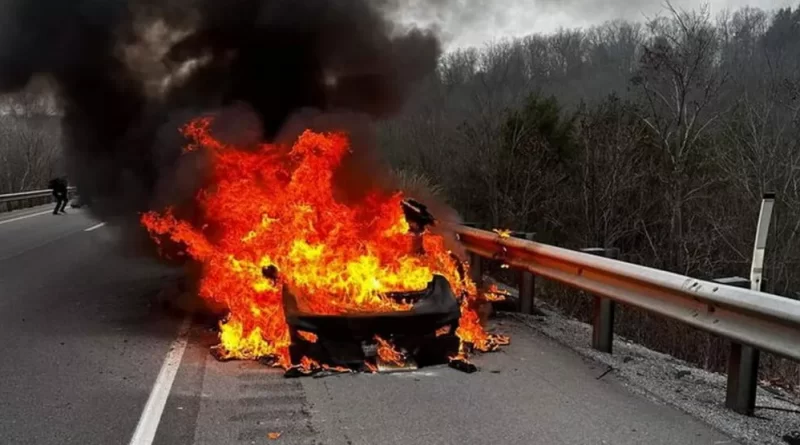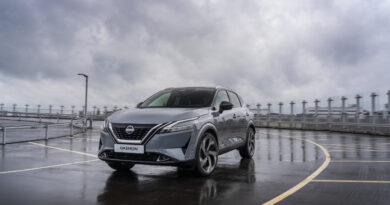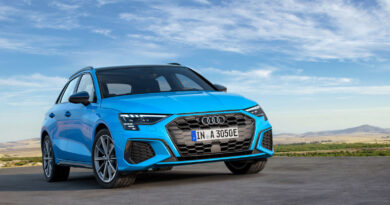Are EVs more of a fire hazard than ICEs?
There are really two questions here, not one. The first is whether EVs are more or less likely to catch fire than ICE vehicles. The second is whether EV fires are worse than ICE fires.
EV fires don’t seem to be more frequent, but it’s early days…
Videos of burning EVs are easy to find online. There are plenty of them, and it’s not hard to figure out why. ICE-powered car fires aren’t unusual. Who wants to watch footage of something so common it’s absolutely unremarkable?
EVs are, for most people, something new and unfamiliar. When one of them burns, it’s almost guaranteed to be filmed and uploaded. The fascination is understandable. Humanity hasn’t had more than a century, as with ICE vehicle fires, to get used to the sight of an EV in flames.
But unlike burning EV videos, finding data from a reliable source on the frequency and likelihood of an EV catching fire is hard.
There’s a lot of information out there on the internet, nearly all of it untrustworthy. Many authors start from dodgy assumptions. Some are the work of self-styled experts with an agenda, a pocket calculator and no idea of how to reach a sound statistical conclusion. Others are the work of businesses looking for a way to attract some attention. Electric scooters and bikes are also getting caught up in the hype about lithium-ion battery fires (this article looks at the prevalence of e-scooter, e-skateboards and e-bike fires and points out that cars are not the problem when it comes to fires).
What’s very easy to establish is that EV fires are, in absolute terms, quite rare. Here’s a good and verifiable example: London Fire Brigade dealt with 1898 petrol and diesel vehicle fires in 2019, compared to 54 EV fires.
But comparisons like this only highlight the fact that in London, as in many other wealthy places in the world, ICE-powered vehicles vastly outnumber EVs. It tells us nothing about whether an EV is more or less likely to catch fire than a passenger vehicle with an ICE.
This is where it gets really tough to find good information from trustworthy sources. Those whose full-time job it is to track the data are cautious about reaching definitive conclusions.

People like Richard Billyeald, for example. He’s chief tech officer at Thatcham Research, the respected outfit established in 1969 to conduct testing and analysis for the UK car insurance industry.
“Our latest research indicates that the risk of a fire for all types of EV remains less likely than for ICE vehicles,” he said in a recent interview with US business magazine Forbes. “It should be noted that the usable data only goes back five years and even now the number of EVs on the roads still represents a very small sample size.”
Billyeald, an engineer, also said Thatcham Research conducted crash testing of EVs in the UK on behalf of Euro NCAP. “Despite the robust impacts to the front and particularly the sides of the vehicle where the battery is most vulnerable, there have been no resultant thermal events.” That’s engineer talk for what you or I would call a fire.
Tests show EV fires are not more intense
Here the evidence is quite clear. There’s not a whole lot of difference between EV fires and ICE fires when it comes to either intensity or the overall amount of heat released.
We know this because of some excellent work done in 2022 by a group in Korea working for the country’s Fire Testing and Research Centre.
What did they do that was so good? They burned five Hyundais, that’s what; three Kona EVs, an ICE-powered Kona and a hydrogen fuel-cell Nexo FCEV (Hyundai has also extensively tested the Nexo for fire safety).
Why three EVs? The Fire Testing and Research Centre wanted to measure the difference, if any, between a standard Kona EV with a 39kWh battery pack and a long-range Kona EV with a 64kW battery pack.
They also wanted to find out how much the battery pack contributed to the fire, compared to the rest of the vehicle. To do this they removed the 64kWh pack from another Kona EV and burned the battery pack and the remainder of the vehicle in separate fires.
In every case the total destruction of the test sample took no more than 70 minutes. The nature of the experiment meant no attempt was made to extinguish the fires.
Everything was burned in a special test rig. Suspended above it was a massive cone to suck up the products of combustion for analysis. Each vehicle was fitted with multiple sensors and each test was videoed from multiple viewpoints. This was serious, and seriously expensive, testing.
So let’s move on to examine the results of the Koreans’ fine and fiery work…
The peak heat release rate, basically intensity, for both the whole EV fires was lower than the ICE-equipped Kona. The Kona with the smaller standard-range battery pack was less intense than the one with the larger pack.

Looking at the total heat released from ignition to burn-out, the EVs both released a little more than the ICE vehicle. The FCEV released easily the most heat overall.
But perhaps the most interesting results are those from destroying the battery pack and the rest of the vehicle in separate fires. These show very clearly that the battery pack contributes only a fraction of the total heat released in an EV fire.
The combustion of the plastic, rubber and other flammable materials used to make the Kona EV contributed more than five times the amount of heat released by its 64kWh battery pack. It’s likely the proportions are similar for other EVs.
This isn’t to say that EVs fires aren’t without their particular and peculiar dangers. That’s a subject we’ll examine in a future article…





The only thing that is stopping me from buying an EV is not fire risk, but cost to purchase one.
And in future reports, make sure to comment on battery chemistry and the potential risk(s). LFP ‘appear’ to be less prone to self immolation and the presence of cobalt ‘appears’ to increase risk to fire fighters, for instance. Lots to discover!
Do you have a citation for the research? I am curious about the details and can’t find a scientific publication with Kona EVs/ICEs or Nexo being set on fire when browsing Google Scholar.
It’s probably a translation issue, but I can’t find anything about a Fire Testing and Research Centre in Korea, but there is this Department of Fire Safety Research at Korea Testing & Research Institute. Of course it’s always possible I didn’t try hard enough.
I think this is it:
Kang, Sungwook, et al. “Full-scale fire testing of battery electric vehicles.” Applied Energy 332 (2023): 120497.
It’s also open for everyone to read. Enjoy!